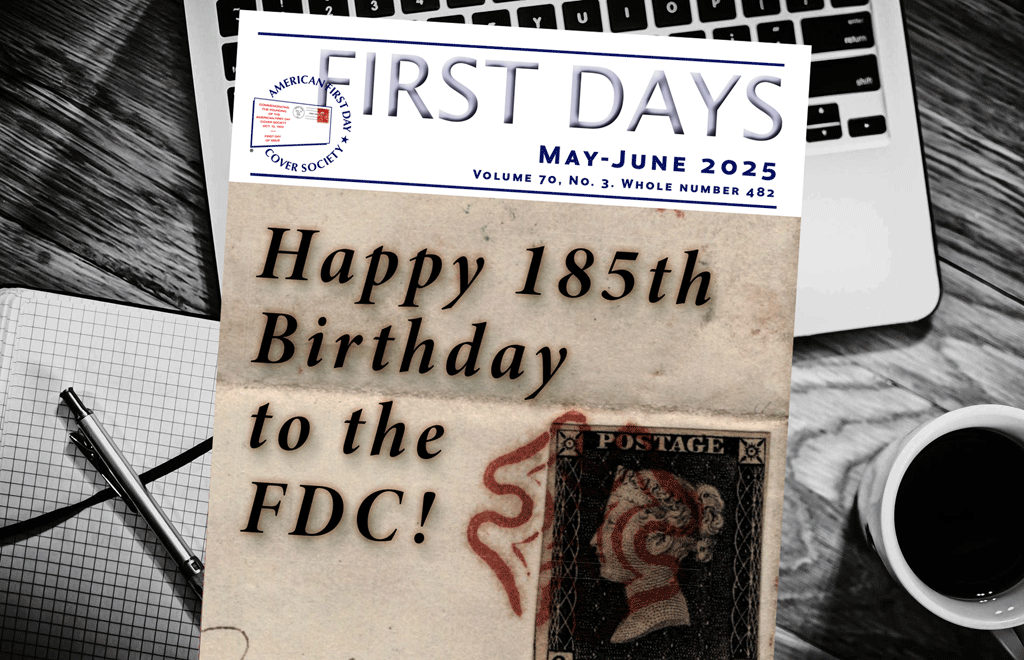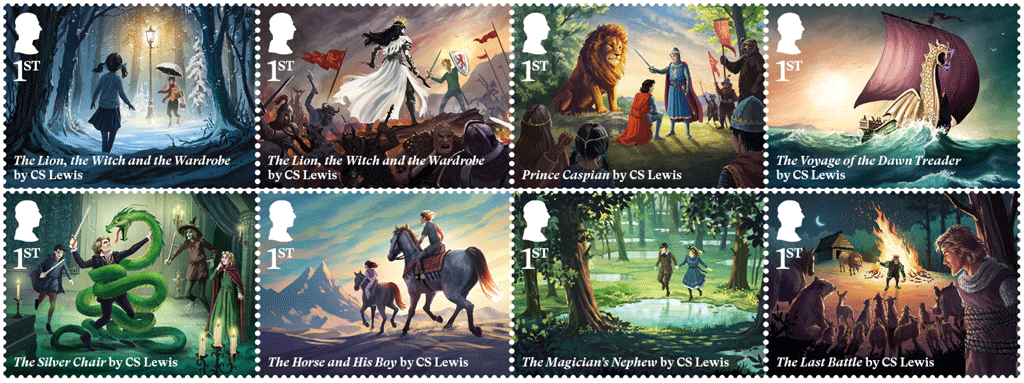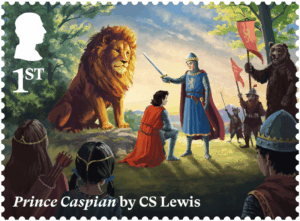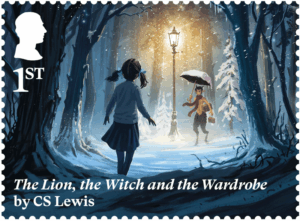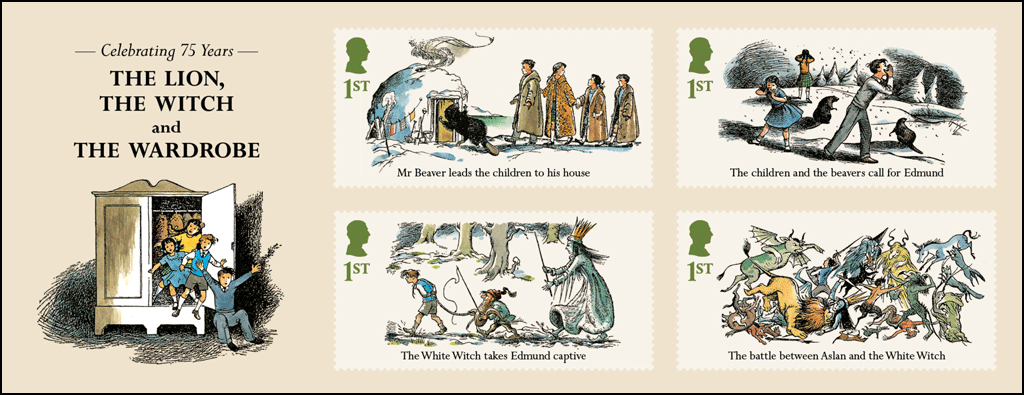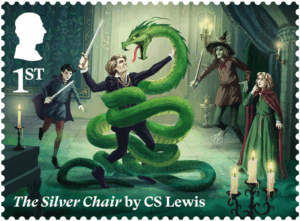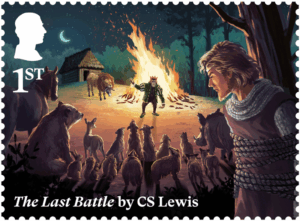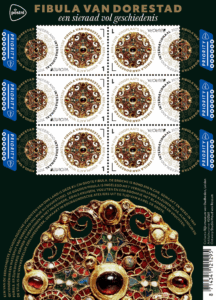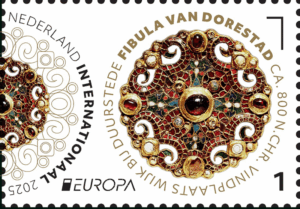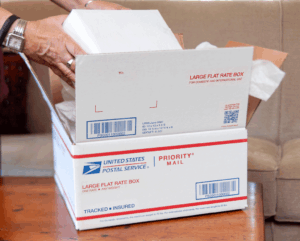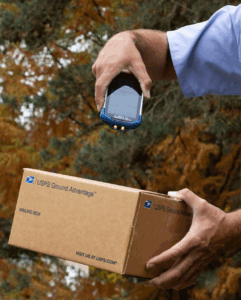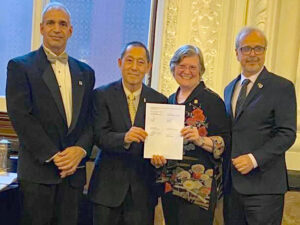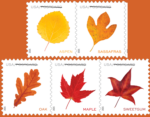[press release] [click on any of the pictures for larger versions]
National Postal Museum Announces Smithsonian
Philatelic Achievement Award Recipients:
Gordon Eubanks Jr., Christopher King and Patrick Maselis Will Receive Award Nov.
The Smithsonian’s National Postal Museum has announced the 2025 Smithsonian Philatelic Achievement Award recipients, Gordon Edwin Eubanks Jr., Christopher Miles  Bertram King and Patrick Valère Maria Jérôme Maselis [right to left in the photo]. They will be honored at a gala at the museum Saturday, Nov. 8.
Bertram King and Patrick Valère Maria Jérôme Maselis [right to left in the photo]. They will be honored at a gala at the museum Saturday, Nov. 8.
The Smithsonian Philatelic Achievement Award (SPAA) was established in 2002 to honor and celebrate living individuals for outstanding lifetime achievement in the field of philately. This achievement may include original research that significantly advances the understanding of philately, exceptional service to the philatelic community or sustained promotion of philately to the benefit of current and future collectors.
“The Smithsonian’s National Postal Museum is honored to present this esteemed award to such accomplished and influential individuals from around the world,” said Elliot Gruber, director of the museum. “Winners from the United States, United Kingdom and Belgium demonstrate the global presence of lifetime achievers in the field of philately.”
The SPAA award medallion is a 3-inch, gold-plated bronze disc depicting a sunburst with eight straight and eight wavy rays. Derived from the family coat of arms of James 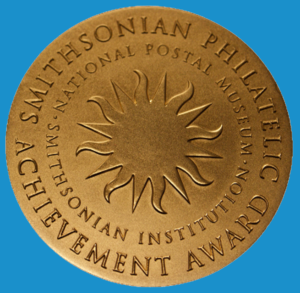 Smithson, founding benefactor of the Smithsonian Institution, the sunburst became the Institution’s official seal June 3, 1966, and is incorporated into the official flag flown by Smithsonian facilities and Smithsonian-sponsored expeditions throughout the world. As such, it is a universally recognized symbol of enlightenment and learning that links the Smithsonian’s history with its future. The medallion is suspended from a grosgrain neck ribbon in Smithsonian blue and yellow.
Smithson, founding benefactor of the Smithsonian Institution, the sunburst became the Institution’s official seal June 3, 1966, and is incorporated into the official flag flown by Smithsonian facilities and Smithsonian-sponsored expeditions throughout the world. As such, it is a universally recognized symbol of enlightenment and learning that links the Smithsonian’s history with its future. The medallion is suspended from a grosgrain neck ribbon in Smithsonian blue and yellow.
“I could not think of three more perfect individuals to have been chosen to receive this year’s Smithsonian Philatelic Achievement Awards—one of the most prestigious awards in the world to recognize outstanding achievements in philately,” said Charles Shreve, chair of the museum’s Council of Philatelists. “In addition to being outstanding philatelists, all three are spectacular ambassadors of our hobby.”
A special website provides information about the SPAA gala event, including information on purchasing tickets to attend.
About the recipients:
Gordon Eubanks Jr.
Gordon Edwin Eubanks Jr. frpsl, United States (born 1946), is one of the foremost students of classic U.S. stamps. He assembled and exhibited some of the finest collections of the 1847 through 1861 Federal issues ever formed, recognized for their depth of research and presentation quality. He won the American Philatelic Society’s Multiframe Champion of Champions twice, in 2012 and 2014, for two separate exhibits—a rare distinction shared by only a handful of other philatelists.
At the World Stamp Show–NY 2016, Eubanks received the Grand Prix National for his exhibit, “The United States Imperforate Issues of 1851–1856 and Their Importance in an Expanding Postal System.” He has also assembled significant collections of early Kingdom of Hawaii postal history, Great Britain and Commonwealth material, postal history of the U.S. Presidential issue of 1938 and mail to Africa and Asia flown by Pan American Airways.
Eubanks is a board member of the U.S. Philatelic Classics Society, where he supports research, publication and digitization efforts as chairman of the society’s website committee and the 1847 Issue section editor for its publication, Chronicle of the Classic U.S. Postal Issues. He received the society’s Distinguished Philatelist Award in 2019 and its Tracy Simpson Cup for outstanding service in 2022.
He is an active member of, and frequent presenter to, the Collectors Club of New York and Royal Philatelic Society London. He previously served on the boards of the Philatelic Foundation and Westpex, where he was bourse chairman. He was a member of National Postal Museum’s Council of Philatelists from 2012–2025.
In addition to his philatelic accomplishments, Eubanks had a distinguished career in the military and corporate sectors. He served as a commissioned officer in the U.S. Navy’s nuclear submarine force during the Cold War and later became a pioneer in software development during the early personal computing era.
Christopher King
Christopher Miles Bertram King rdp frpsl, United Kingdom (born 1948), is a prolific collector, researcher and exhibitor specializing in the philately of Denmark, the Duchy of Schleswig, Lübeck and Napoleonic Europe as well as illustrated, propaganda and censored mail. His exhibits have won numerous international gold and large gold medals, especially “Schleswig, From Danish Duchy to Prussian Province: Early Mail to 1867.” He frequently contributes ¬articles to publications such as Scandinavian Contact, Posthorn, London Philatelist and Collectors Club Philatelist. He is an internationally accredited juror for postal history.
King joined the Royal Philatelic Society London (RPSL) in 2005 and advanced quickly through its ranks. He became a member of council in 2007, was elected a fellow in 2008 and served as a vice president from 2009–2012. As president from 2013–2015, he focused on positioning the society’s library, building and membership for the future. He led the effort to find a new home for the RPSL, completed in 2019.
His record of service to international philately includes Keeper of the Roll of Distinguished Philatelists (2009–2015), chairman of the British Philatelic Trust (2010–2015), executive board member of the Association of British Philatelic Societies (2009–2012) and board member of the Club de Monte-Carlo de l’Elite de la Philatélie (2016–2024).
King was elected a membre associé of the Académie de Philatélie (France) in 2013 and invited to sign the Roll of Distinguished Philatelists in 2014. He received the RPSL’s Bacon Medal and was named an Honorary Fellow in 2018. He received the award of the European Parliament of L’Académie Européenne de Philatélie in 2018 and the Collectors Club of New York’s Alfred F. Lichtenstein Memorial Award for Distinguished Service to Philately in 2019.
Patrick Maselis
Patrick Valère Maria Jérôme Maselis rdp frpsl, Belgium (born 1961), is an industrial chemist, managing director and passionate collector internationally recognized for his many contributions to philately. A fourth-generation philatelist, Maselis has created gold and large gold medal-winning exhibits of Belgium and Colonies stamps and postal history. His scholarly approach is marked by meticulous research into rare postal documents, rates and markings. He regularly shares his expertise and collections through publications, exhibitions and lectures.
As president of the Club de Monte-Carlo de l’Elite de la Philatélie (2009–2022), he organized and promoted the biennial MonacoPhil exhibition, an exceptional showcase of the world’s greatest philatelic rarities, attracting leading collectors, scholars and dealers from across the globe.
Maselis served as president of the Royal Philatelic Society London (2017–2019), the only non-British individual ever elected to that position. During his tenure, he emphasized international outreach leading up to the society’s 150th anniversary and tirelessly promoted the “Tomorrow’s Royal” committee (led by Peter Cockburn) that helped the society relocate to new premises.
In addition, Maselis actively supports and nurtures young collectors. He has hosted them on visits to London and Monte Carlo and provided them with opportunities to engage with collectors and experts from around the world and participate in events such as dinners, meetings and exhibitions.
In 2012, he was invited to sign the Roll of Distinguished Philatelists and to join the National Postal Museum’s Council of Philatelists. He received the Alfred F. Lichtenstein Memorial Award for Distinguished Service to Philately in 2021. He is first vice president of L’Académie Européenne de Philatélie and a membre correspondant of the Académie de Philatélie (France), among numerous other philatelic affiliations.
About the Smithsonian’s National Postal Museum
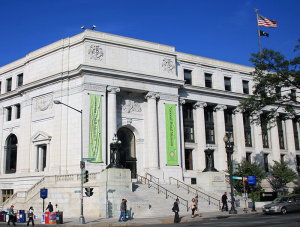 The National Postal Museum is devoted to presenting the colorful and engaging history of the nation’s mail service and showcasing one of the largest and most comprehensive collections of stamps and philatelic material in the world. It is located at 2 Massachusetts Ave. N.E., Washington, D.C., across from Union Station. The museum is open daily from 10 a.m. to 5:30 p.m. (closed Dec. 25). For more information, visit postalmuseum.si.edu. Follow the museum onFacebook, Instagram, Twitter, Pinterest and YouTube.
The National Postal Museum is devoted to presenting the colorful and engaging history of the nation’s mail service and showcasing one of the largest and most comprehensive collections of stamps and philatelic material in the world. It is located at 2 Massachusetts Ave. N.E., Washington, D.C., across from Union Station. The museum is open daily from 10 a.m. to 5:30 p.m. (closed Dec. 25). For more information, visit postalmuseum.si.edu. Follow the museum onFacebook, Instagram, Twitter, Pinterest and YouTube.
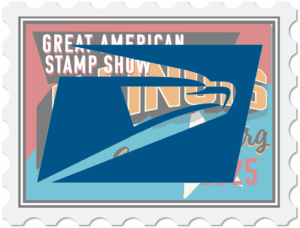 American Stamp Show 2025, August 14-17. One, on Thursday at 1 pm, is an overview of Stamp Services: What goes into deciding which stamps the USPS will issue and how. The other, on Friday at 2 pm, is with Stamp Fulfillment Services — sales, production, and cancellations, among other functions.
American Stamp Show 2025, August 14-17. One, on Thursday at 1 pm, is an overview of Stamp Services: What goes into deciding which stamps the USPS will issue and how. The other, on Friday at 2 pm, is with Stamp Fulfillment Services — sales, production, and cancellations, among other functions.
